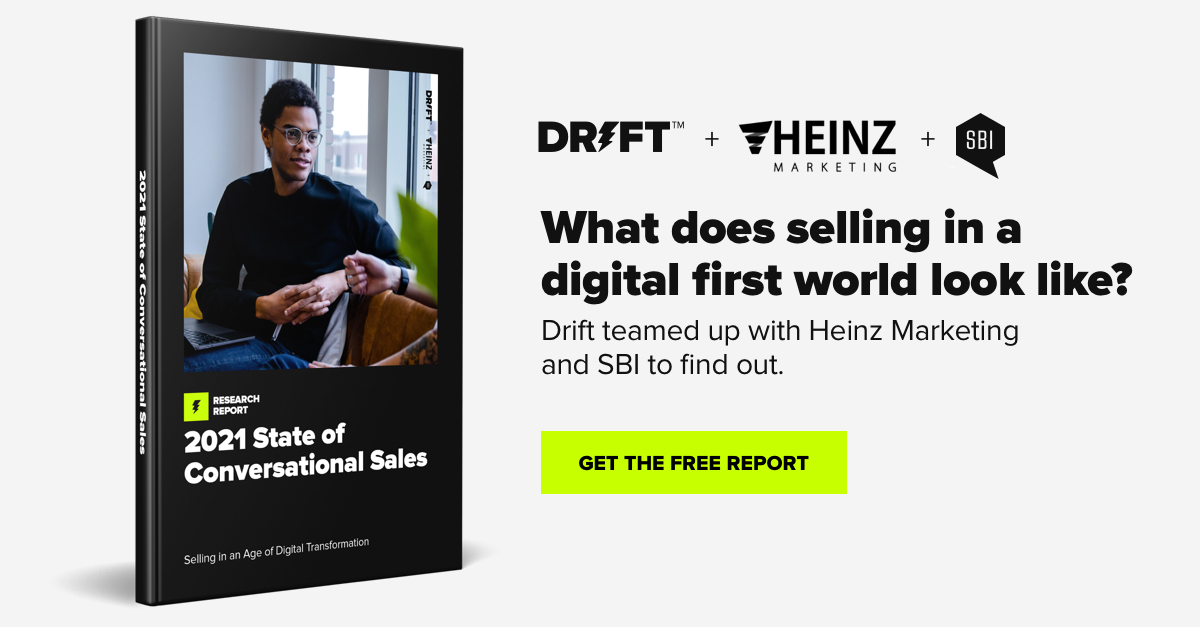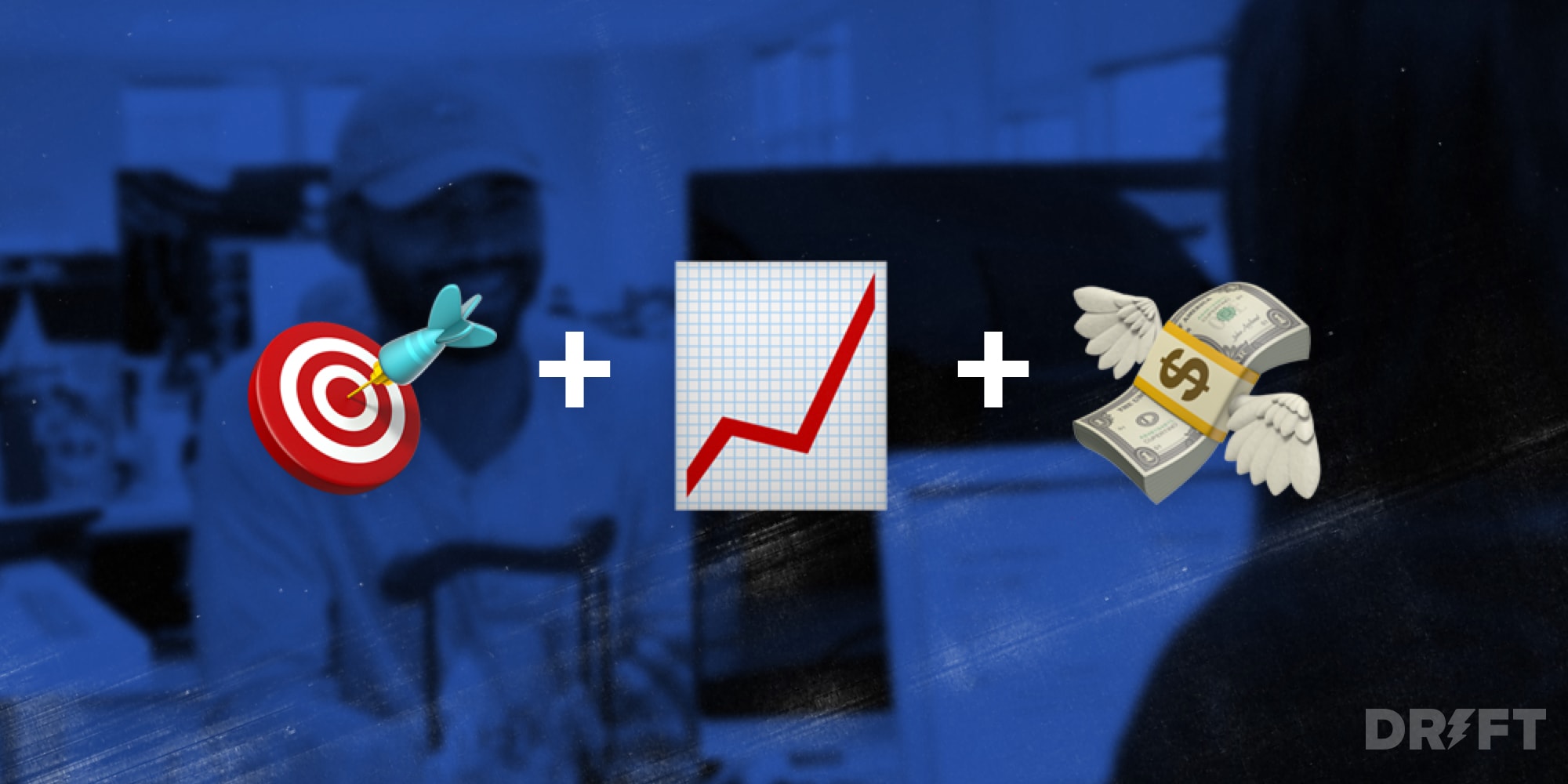Revenue teams face increasing pressure to build, accelerate, and close sales pipeline.
As the RVP of Enterprise Sales at SalesLoft, I’ve seen firsthand how 2020 turned our sales process upside-down.
Prospective buyers make purchasing decisions differently today, which means our team had to adapt – and fast. We’ve had a few months to adjust our operations, and I can now say with certainty: It IS possible.
How do you accelerate and build sales pipeline while simultaneously adjusting to changing buying behaviors?
The answer:
- Be personal and human in your interactions with prospective buyers
- Ensure a close partnership between sales and marketing
- And keep the customer at the center of all your decisions
Here’s how we did it.
If you want to watch our presentation, click here. Otherwise, keep reading for all the insights 💡
Your Buyers. Are. Exhausted.
Seriously, don’t ask me to get on one more Zoom call 🙅♀️
We’re all feeling it. Your buyers are e x h a u s t e d managing their work lives, their home lives, and online schooling all at once. That translates to non-linear buying cycles, purchasing during traditional non-work hours, and increasingly larger buying committees.
That’s your opportunity as a seller to engage differently.
Buyers complete 57% of their journey before they ever engage with a sales rep.
You need to create a positive experience for that customer long before they pick up the phone. Treating your sales process as a transaction rather than an experience alienates buyers and ultimately slows down growth.
It’s not a transaction – it’s a relationship.
And now, that’s happening digitally. 👇
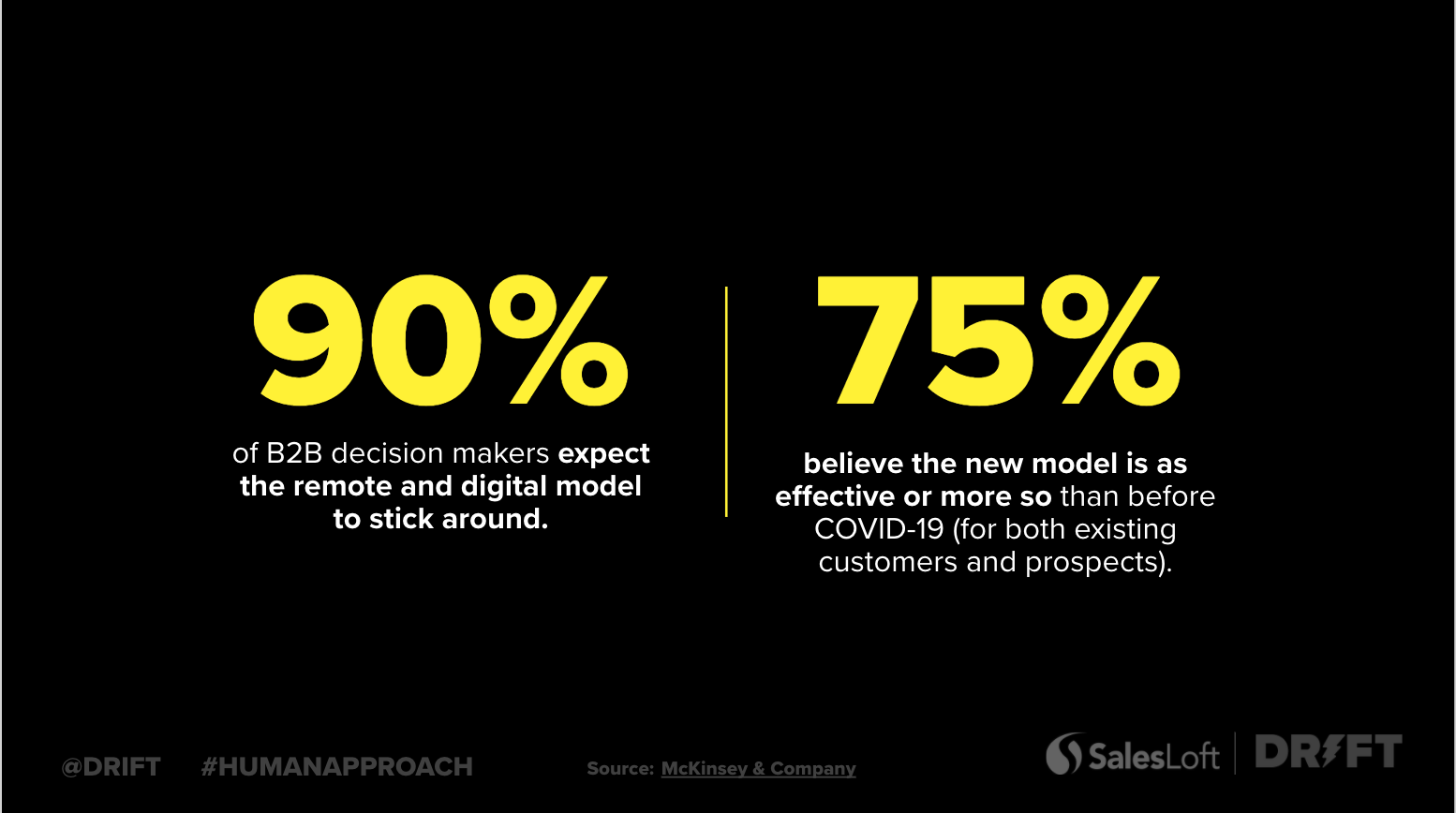
90% of B2B decision-makers expect the remote and digital model to stick around, while 75% believe the new model is as effective or more so than before COVID-19.
Digital is here to stay.
Truthfully, I miss the thrill of being onsite with my customers too. But you know what I don’t miss? Landing at 1 AM in LaGuardia after long delays and standing in an Uber line in sub-zero weather. With everything digital, I can still meaningfully connect with my customers – without all the travel time.
So, how do you create those relationships and build sales pipeline digitally? Personalization. Customer-first. It may sound counterintuitive, but the more technology you use, the more thoughtful and human you need to be in order to earn a partnership with a customer.
5 Ways to Accelerate & Build Sales Pipeline with Personalization
I coach my sellers to follow McKinsey’s sales framework. “Getting it right” means delivering on the three things buyers value most: Transparency, expertise, and speed.
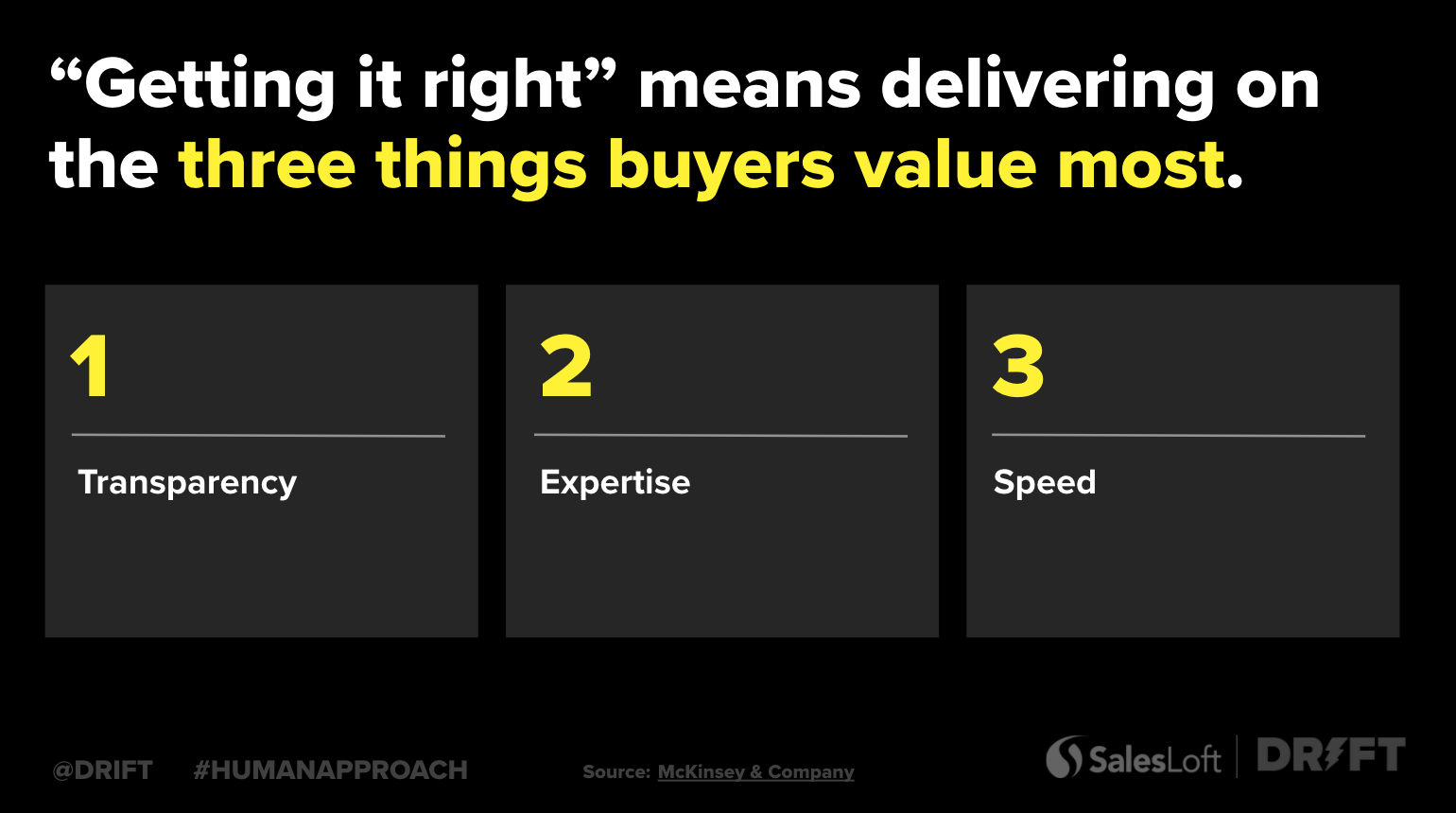
Buyers need a foundation of trust in order to build a relationship with you.
And you can create that by:
- Being super transparent about your product and capabilities
- Leading with education and expertise around a particular topic
- Acting quickly and efficiently on the buyer’s time, not yours
Of these three, #1 is most important–never miss a chance to be upfront and honest about what your solution can – or more importantly cannot – do.
This is especially true digitally, where you’re meeting online or through Zoom.
Easier said than done, right?
That’s why I put together my top five recommendations for building sales pipeline and creating more personal, authentic experiences at scale 👇
1. Capture Attention by Creating Value
Whether you’re in sales or marketing, it’s your job to create commercial insights and teach your prospects.
Doing that means knowing your buyer.
As a seller, you have a unique vantage point. You’re talking to your customer’s peers all day long, so you can share those insights and observations back with your prospects.
Yes, your products have value. But your conversation should, too.
There’s no reason to ask your prospects to participate in a 14-question discovery quiz. Lead with a specific hypothesis for what problems your product solves for them.
That might mean you need to slow down to speed up – taking a breath to do some in-depth research on a prospect or account before launching into your pitch.
While that might seem like more effort, it really works to build sales pipeline. The data confirms this 👀
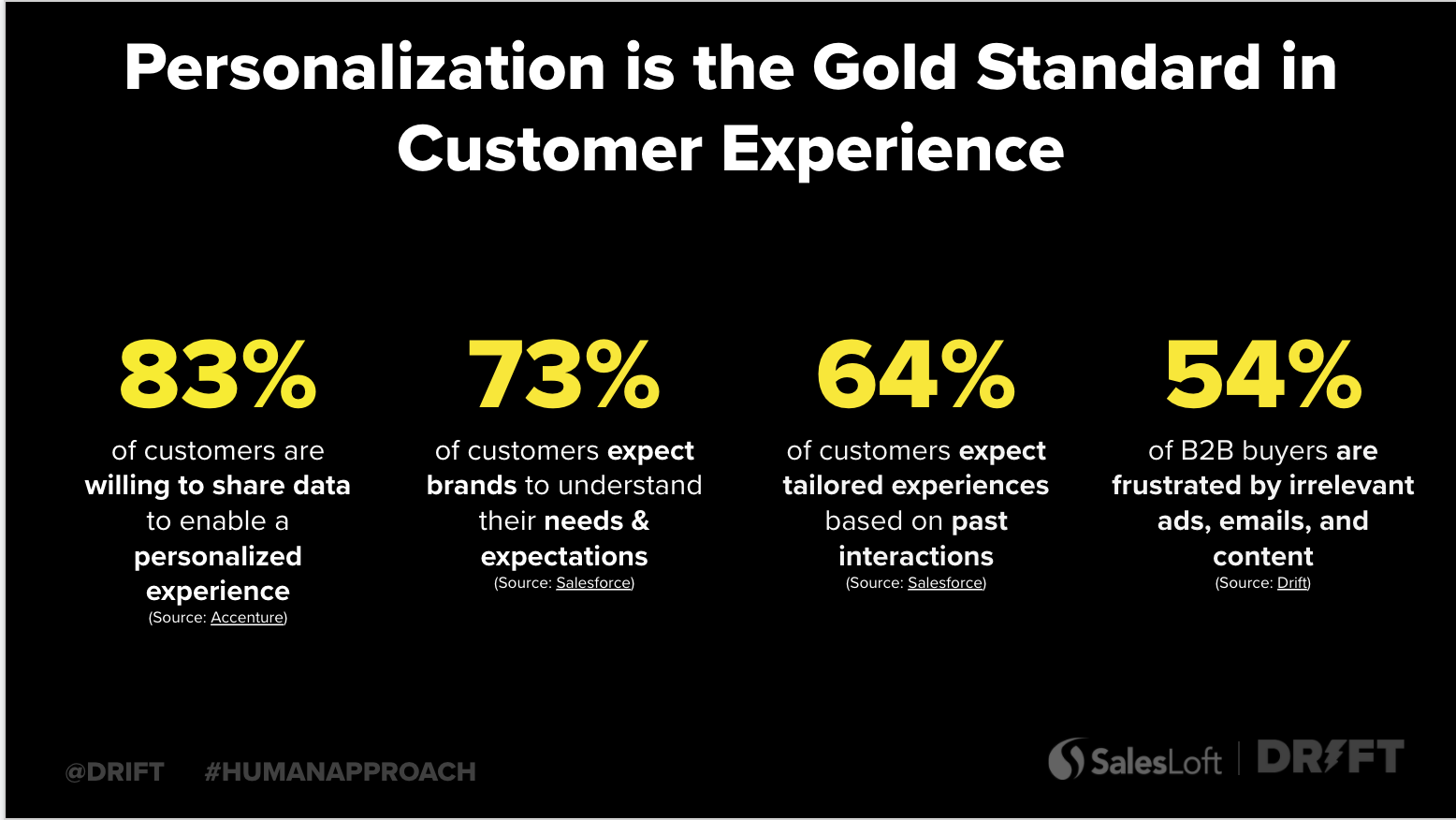
You earn the right to ask a question, and it starts with a well-researched point of view.
My expectation is that a seller comes into a conversation with a hypothesis about why their product is a good fit and can articulate that to the customer. That can be during your sales conversation, or even beforehand when they land on the website.
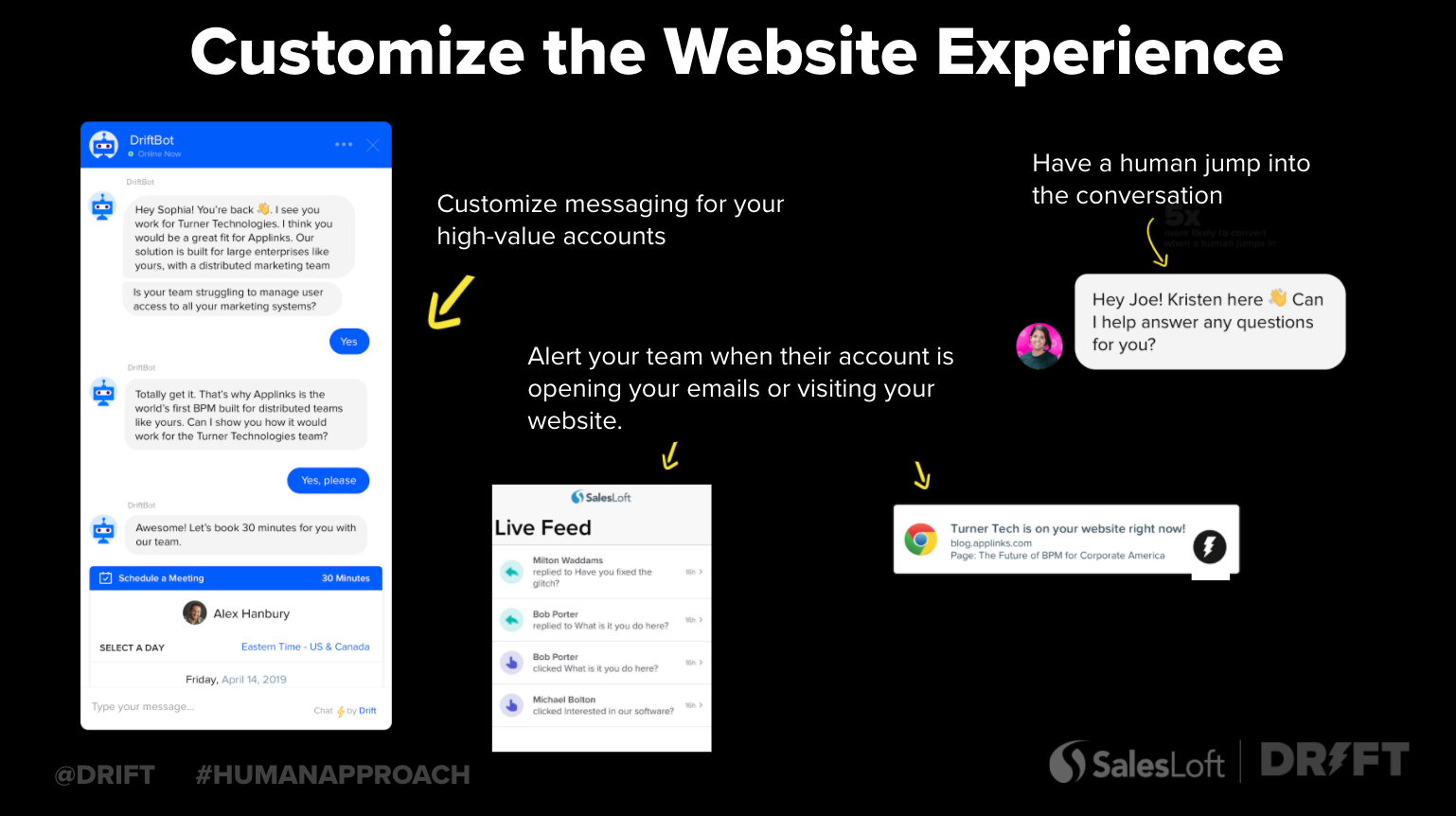
As you can see in this example, the website personalization is friendly and personable. The bot says, “Hey Sophie, you’re back.” It already knows that the prospect works for Turner Technologies and has been to the site before, ready with a recommendation. That’s a great starting point for a rep to jump in and create a 1:1 experience.
There’s so much information out there – use it.
2. Be Present and Personal When Buyers Across the Account Engage with You
Buyers and sellers aren’t in adversarial relationships. We’re on the same team – our mutual goal is to solve a problem for the buyer.
You need to be present and personal when buyers engage. And you need to engage earlier in the funnel than you’re used to.
That’s because you need to work together with the buyer to make sure they’re getting what they need out of the interaction, whether that’s more education, help with selling their internal team on the idea, or providing detailed information on your products.
And, you need to be there for them. That’s where website notifications can be a super powerful sales tool.
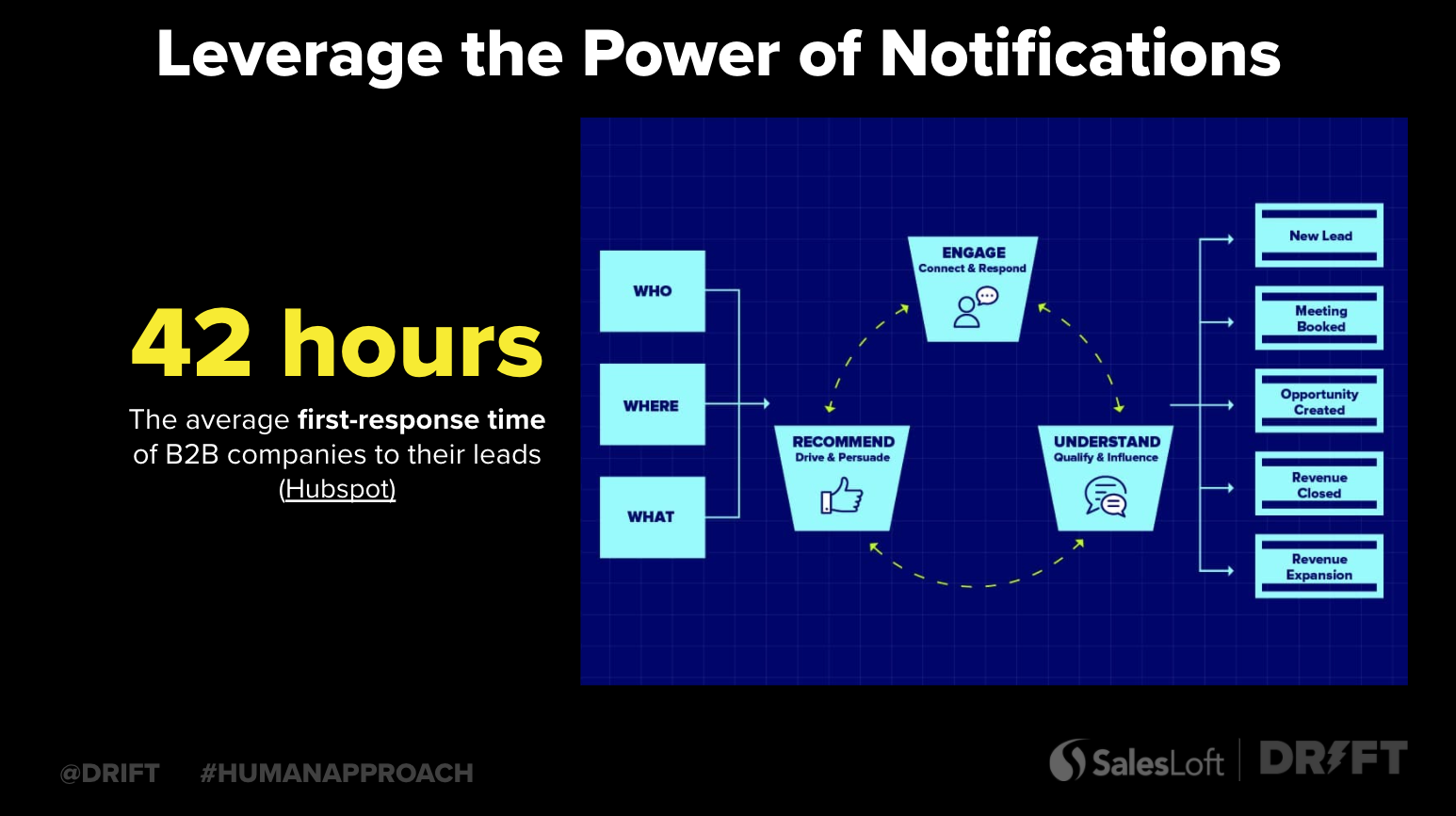
A notification they stopped by your site, read a blog post, added something to their cart…those are all intent signals. Use those clues to understand what they’re thinking about, and see if it matches other patterns from inbound buyers. Sellers and marketers have to work together to understand the best path forward, well before the traditional sales handoff.
It’s going to help you understand how you should engage, depending on the who, the where, and the what. And then understand how to approach that engagement in a real-time way to successfully build more sales pipeline.
3. Provide 24/7/365 Availability with Information
Okay, first of all – this doesn’t literally mean spending 24/7/365 attached to your computer.
You’re not expected to be always-on. You are, however, expected to provide value at every point in the buyer’s journey, and that means leveraging the combined power of automation, marketing tools, and sales tools to make a customer feel heard or seen whether they’re engaging you during work hours or not.
They’re going to buy from you when they want to buy from you.
71% of customers expect companies to interact with them in real-time.
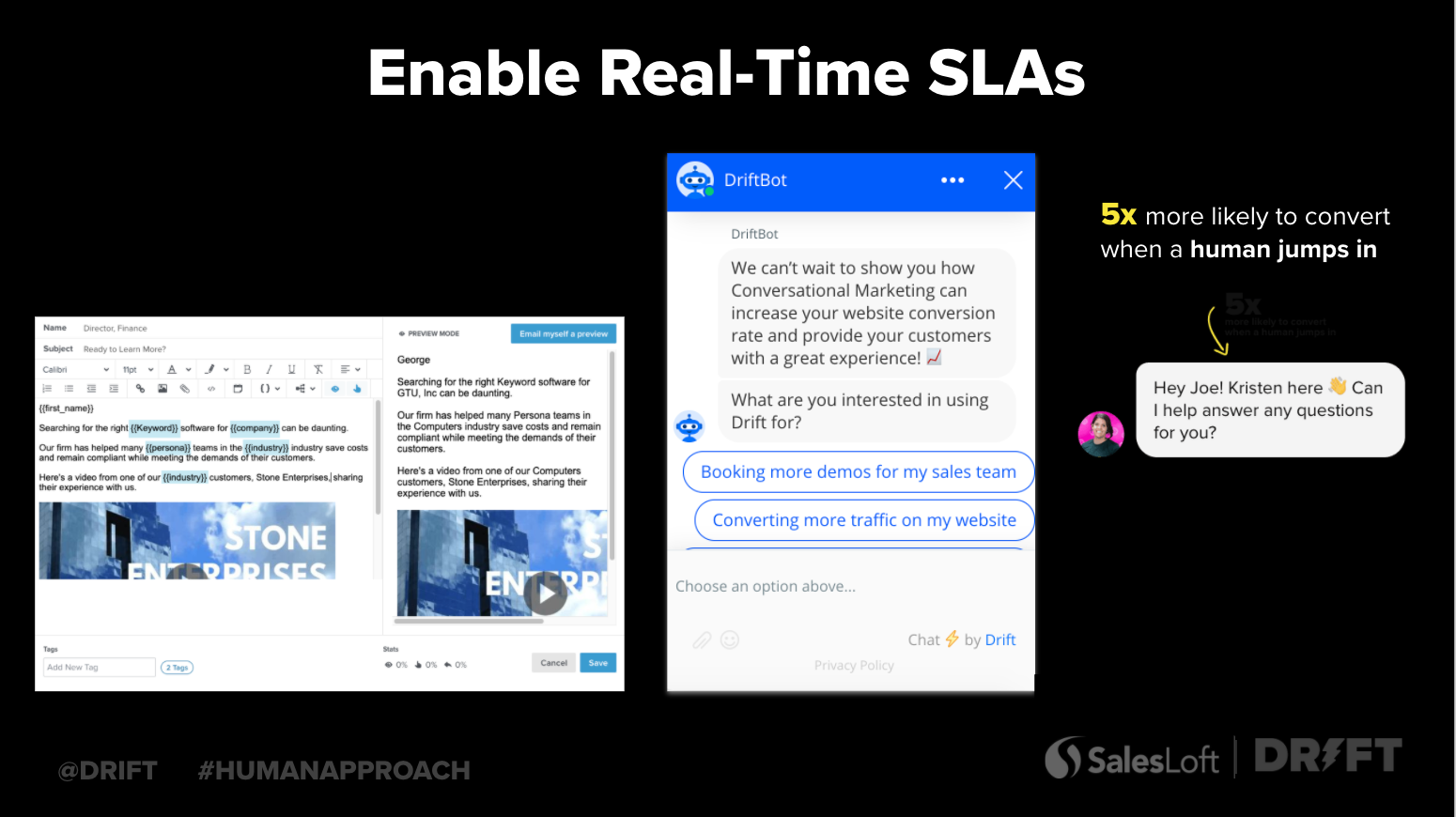
What that really means is giving them options to contact you that fits them best.
One way to do this is just to ask. (We often forget this, but it’s true.)
I’ve seen buyers using text messaging, Slack, email, phone…you name it. As a seller, just ask them how they prefer to communicate with you. It’s a much more frictionless way to interact.
4. Align Marketing and Sales to Build Sales Pipeline
I can’t say it enough: Marketing and sales need to work together.
That’s because you’re more likely to encounter a buying committee than an individual buyer. Today, there is no one decision-maker.
If I’m selling at SalesLoft, for example, I’m selling into heads of sales, I’m selling to end-users, I’m selling to marketing, I’m selling to IT, I’m selling to sales operations, all up and down the different levels in the organization.
The most effective sellers partner with marketing to deliver a personalized experience to each of those buying influencers on the other side and create a seamless journey for multiple people…all at once.
Until those days are back when we can all go out to dinner together to talk things out as a group, you’ll have to piece together each buyer’s actions to identify their point in the journey. That means aligning your go-to-market teams across the entire buying cycle.
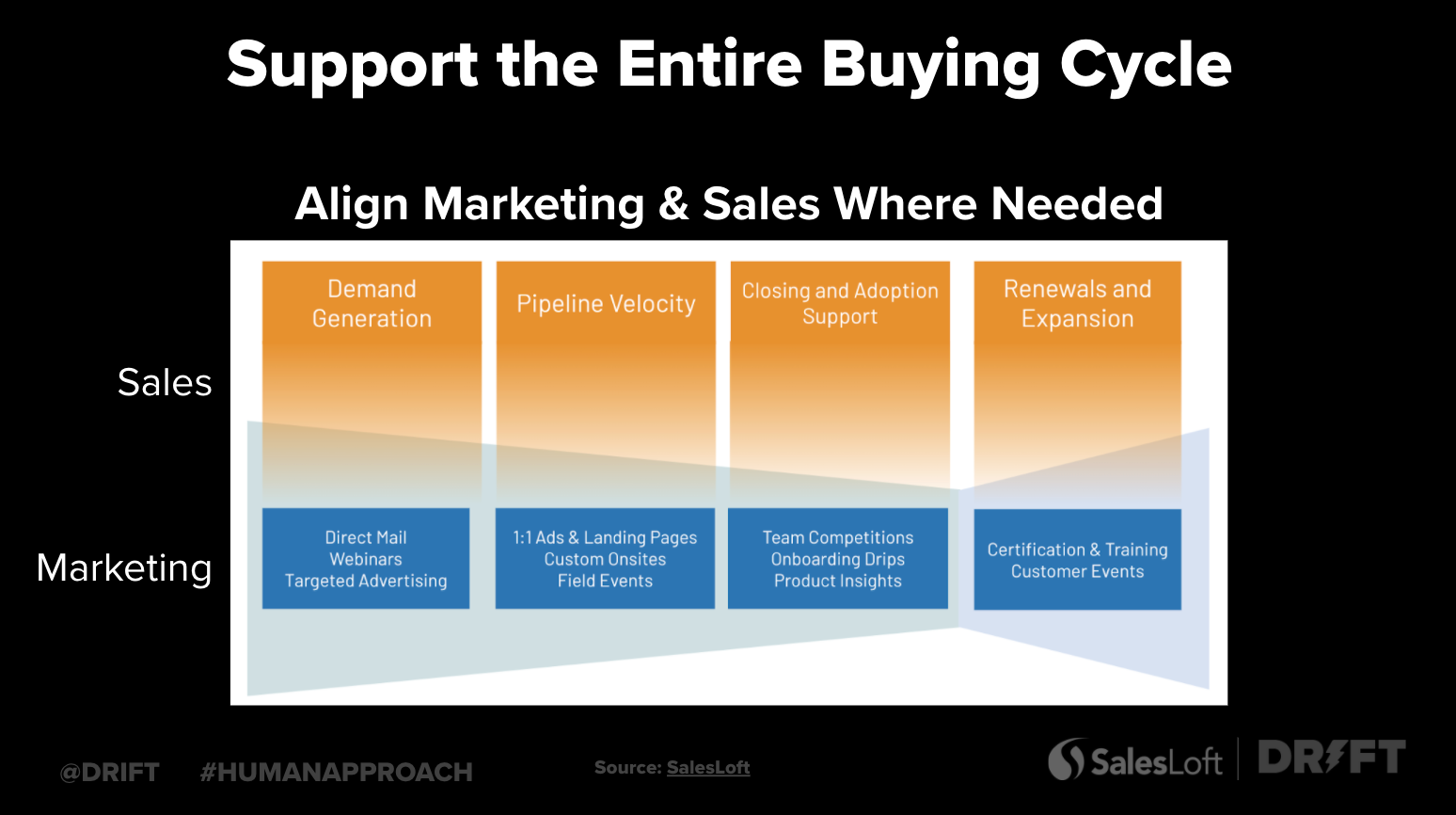
The buying process isn’t linear, so how you engage prospects and customers shouldn’t be, either.
Marketing doesn’t just happen at the beginning, and building sales pipeline doesn’t just happen at the end. There’s a dynamic interaction between the two across the cycle.
Alignment won’t happen overnight. But if you adapt your sales and training processes, and keep the customer experience at the center, you can leverage sales pipeline as the bridge between your teams. At the end of the day, you’re all trying to accelerate revenue.
5. Adapt Sales and Training Processes
I have such a visceral memory of how I was coached as a seller – leaving a customer meeting and immediately talking through what I did well and what I could have done better while waiting in airport lounges or in the backs of Ubers on the way to my next presentation. It was so valuable to have that real-time feedback.
But that’s not how sales is done anymore. Interactions are so much more micro than big presentations. You have so many digital opportunities to engage with a buyer, and therefore so many chances to iterate on your approach.
I coach my sales team virtually, and it’s always hard to deliver honest, authentic feedback without sitting across the table from one another. But the good news about digital interactions is that it’s easy to go back and listen to recordings, read through transcripts of chats, or see email interactions. You don’t have to be in the room to know how they’re doing, or what they could have done better.
Sales enablement adoption has increased 343% in the last five years alone. For my team, we approach sales enablement the same way we approach our customers – with transparency, expertise, and speed.
Look to the Future with Your Sales Team
We’re running headlong into a new era of sales and marketing. As buyer preferences change, so too will your operations. So where are we going next?
I have three hypotheses:
- Digital selling is here to stay. Even after organizations return employees to the office.
- Real-time selling is the new standard. Sellers need to build sales pipeline by responding and reacting to what buyers are doing and use technology to prioritize the right interactions with high-intent buyers.
- More organizations will invest in digital transformation. More and more of our interactions will be digital, and so organizations will need to adjust their processes accordingly.
Nothing about building sales pipeline is easy. But if you remember that buyers are people just like you, you’ll build stronger relationships – and close more deals. (Even if you’re still working from home. In sweatpants. Next to your kids.)
Amanda Georgoff is RVP of Enterprise Sales at SalesLoft; she has nearly 20 years of Enterprise sales + customer management experience in both software and services. Prior to SalesLoft, Amanda worked in a variety of customer-facing roles at Xactly and CEB, now Gartner. She lives in Austin TX with her husband (Michael), her son (Gray) and her daughter (Hayes).





